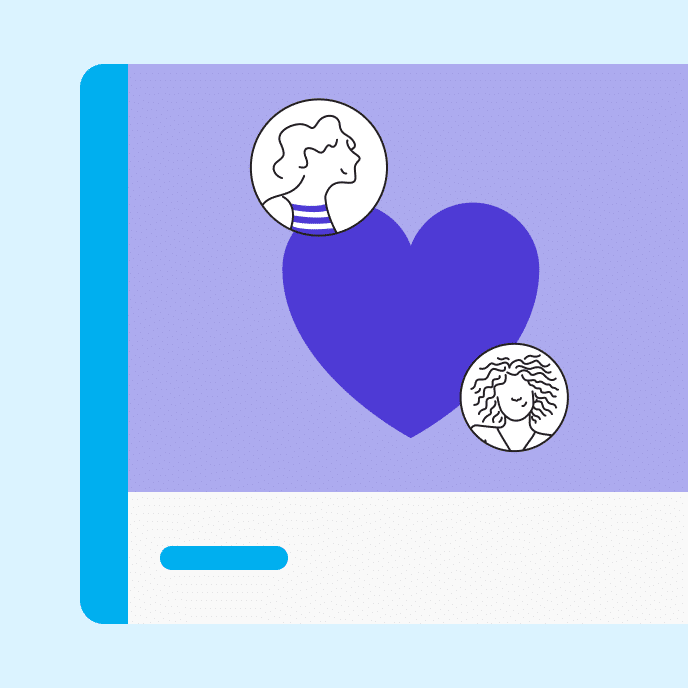Improve Customer Service Workflows with E-Learning
Learn e-learning strategies that will help streamline your customer service workflows, enhance agent training, and help your team deliver exceptional customer experiences.

Optimizing customer service workflows with e-learning
Exceptional customer service isn’t just a competitive advantage—it’s essential for long-term success. However, high-quality service requires more than a team of skilled agents. It demands efficient, streamlined workflows that allow customer service teams to respond quickly and solve problems effectively.
One of the most innovative and cost-effective strategies to enhance the customer service workflow process is integrating e-learning. From managing customer inquiries across multiple channels to ensuring that agents have easy access to the correct information, e-learning can help optimize workflows, improving productivity and customer satisfaction.
In this post, we’ll explore how e-learning can help streamline customer service workflows and reduce time spent on repetitive tasks.
Key Takeaways
Why are customer service workflows important?
Workflows are a series of tasks, processes, or steps that are organized in a specific order to accomplish a goal or outcome. They are the backbone of everything we do, from preparing for work to writing an article.
In customer service, workflows define how work is done, who is responsible for each task, and the order in which tasks are to be completed. Workflows help ensure each customer interaction is consistent, efficient, and effective, reducing the risk of errors or missed steps.
Let’s check out a few common customer service workflows:
- Call Intake Workflow: This involves greeting the customer, gathering necessary information, identifying the issue, and routing the call to the appropriate team.
- Ticketing Workflow: Agents create, categorize, and prioritize tickets for customer requests, ensuring that each issue is resolved promptly. This often involves follow-up and escalation if needed.
- Escalation Workflow: This workflow is used when a customer issue cannot be resolved at the first level, ensuring it’s passed to a higher level of expertise for resolution.
- Refund/Return Workflow: This process handles product returns or refund requests, including verification, approval, and request processing.
- Knowledge Base/Search Workflow: This workflow involves guiding customers through self-service resources (FAQs, articles) or directing them to appropriate solutions, often through chatbots or automated responses.
- Customer Onboarding Workflow: This process guides new customers through account setup, product training, and follow-up support on new products or services.
Best practice for creating customer service workflows

Creating compelling customer service workflows using e-learning can dramatically improve the efficiency and consistency of your service team. Integrating e-learning into customer service workflows can provide ongoing support, enhance performance, and drive a more responsive customer service environment.
Below, discover best practices for creating customer service workflows with e-learning.
Map out training needs at each stage of the workflow
Break down customer service processes into individual tasks and identify the skills and knowledge agents needed to excel at each stage. For example, agents may need training on active listening, gathering customer information, or using customer relationship management (CRM) software at the call intake stage. For escalation, agents might need more advanced problem-solving skills or knowledge of specialized product information.
Create on-demand training
Design training modules that cover specific workflow tasks or processes that can be accessed from anywhere at any time. For instance, you could create separate modules for “Using the CRM system,” “Handling customer complaints,” or “Escalation procedures.” This approach allows agents to learn independently and access training when needed, reducing downtime and boosting performance.
Integrate real-world scenarios and simulations
Scenario-based simulations put agents in real-world situations, such as handling a demanding customer or troubleshooting a product issue. This strategy allows them to practice and improve their response in a controlled environment.
Automate training and workflow updates
With e-learning, you can quickly update and distribute new training content whenever workflows, product information, or company policies change. Additionally, e-learning can be used to train agents on using automated tools, track training progress, and provide instant feedback.
Five ways e-learning tools can improve your customer service workflow
E-learning tools can provide customer service agents with the training, resources, and ongoing support needed to improve workflows. Whether through learning management systems (LMS) platforms, digital adoption tools, or scenario-based training, e-learning helps agents gain the skills and knowledge to perform tasks more efficiently.
Here are five e-learning strategies that can improve customer satisfaction and overall workflow management.
1. Accelerate and standardize training across teams and locations
Training can quickly become time-consuming, costly, and inconsistent when businesses have multiple locations or remote customer service teams. These training challenges span departments and regions, leading to different customer service experiences.
With e-learning, new hires and established agents can access training modules on demand, covering essential topics like company policies, product knowledge, and customer service best practices. Additionally, e-learning ensures that every agent receives the same training, no matter where they’re located, maintaining consistency in company values and customer service standards.
2. Use analytics to identify skills gaps
One of the most important advantages of e-learning is its ability to track and analyze learners’ progress through courses. By monitoring how well your customer support team performs in training scenarios, you can identify where they might struggle with the call intake process—whether collecting customer information, following the correct procedures, or managing customer expectations.
These insights allow managers to offer targeted coaching or additional training to address skills gaps before they affect customer interactions.
3. Standardize call intake procedures
Call intake procedures can vary across agents, locations, or shifts, leading to inconsistent customer experiences and inefficiencies. E-learning can standardize intake processes by delivering clear, structured training on how agents should handle calls from start to finish.
Agents can learn specific scripts, workflows, and key questions to ask during intake, ensuring that no critical information is missed and that customers are routed to the right team or solution from the outset.
4. Build soft skills to enhance customer interactions
E-learning is not just for teaching product knowledge or technical processes—it can also be a valuable tool for developing soft skills, such as communication, problem-solving, and empathy. For example, e-learning modules on conflict resolution, active listening, and emotional intelligence can help customer service representatives handle difficult situations more effectively.
These soft skills can be the difference between a negative customer experience and a positive one that builds long-term loyalty and positive customer feedback.
5. Integrate with call management systems
E-learning can streamline the call intake process by integrating your e-learning platform with call management software. This integration can provide agents with real-time, context-sensitive guidance, training prompts, or reminders during calls.
For example, if an agent is unsure about a particular script or step during the intake process, the system can automatically recommend a relevant training module or guide them through the following steps.
Unlocking e-learning’s impact on customer service workflows
E-learning is a powerful tool for creating efficient customer service workflows. It provides agents with the knowledge, skills, and resources to handle customer inquiries quickly and accurately. By accelerating onboarding, standardizing procedures, offering ongoing training, and leveraging data to address performance gaps, e-learning can significantly reduce customer service challenges.
Ultimately, the more prepared your agents are, the smoother the customer support workflow experience will be. Ready to improve your customer service workflows with e-learning? Check out Your Guide to Next-Level Customer Service Training.
You may also like

How To Show Your Boss Why Your E-Learning Is Worth The Money
See how smart e-learning design creates real value through better job skills, less time away from work, reaching more people, and making sure everyone gets good training.

